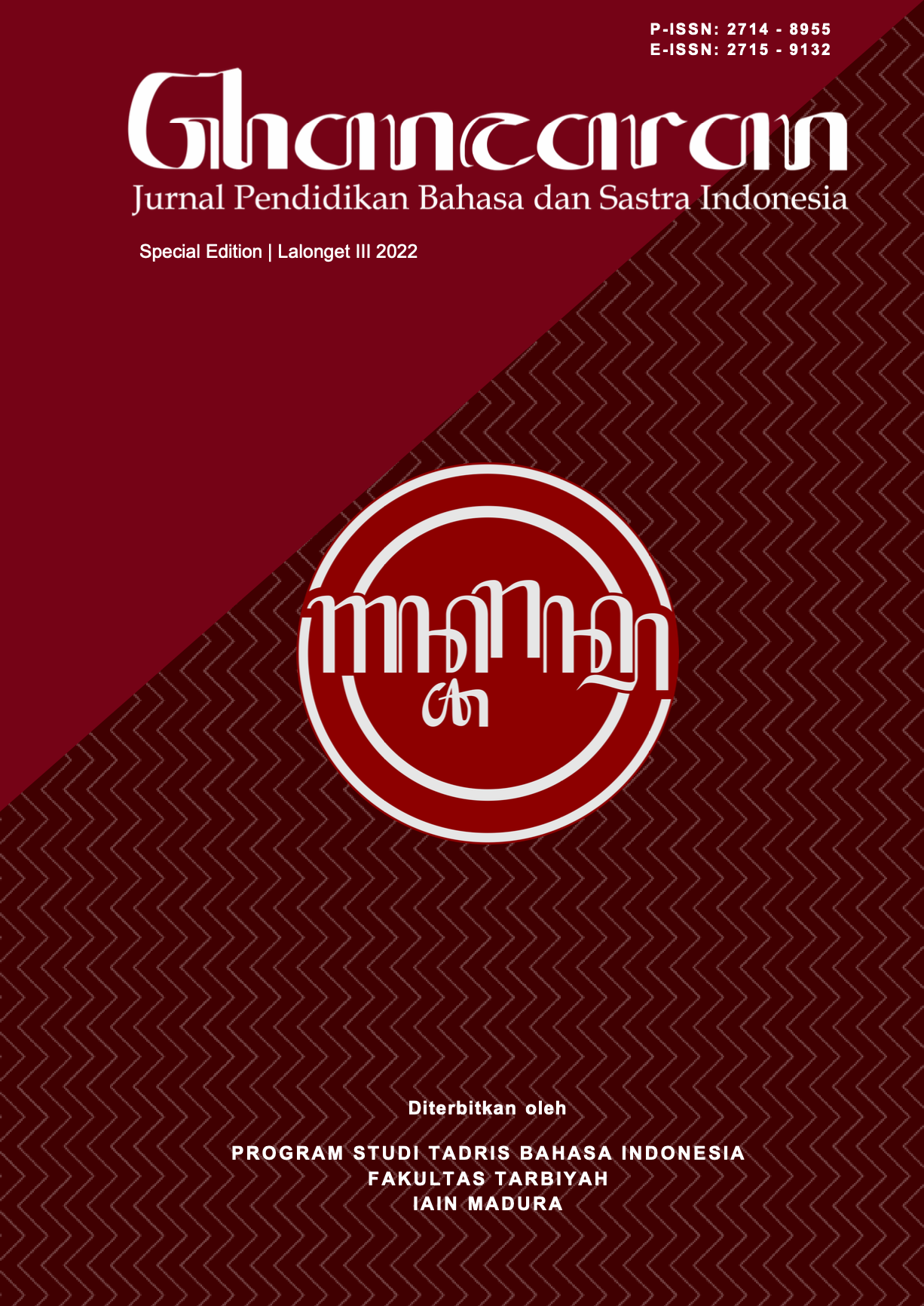Representasi Nasionalisme dan Implementasi Profil Pelajar Pancasila pada Film “Susi Susanti - Love All” dalam Perspektif Semiotika Roland Barthes
 Abstract views: 620
,
Abstract views: 620
,
 PDF downloads: 826
PDF downloads: 826
Abstract
Film is a means of communication in which elements of language are created. It is on this basis that this study seeks to examine the semiotic aspects of the representation of nationalism and the implementation of the Pancasila Student Profile in the film entitled "Susi Susanti – Love All". This research was conducted using a qualitative-descriptive method using the point of view used by Roland Barthes. The units of analysis are words (dialogue), images (symbols), and sound. This study concludes that the representation of nationalism and the Pancasila Student Profile in the film being analyzed can be seen through the dialogues of the actors, film scenes, and the images and symbols in the film. This aspect can be seen as the meaning of the film which is connotative, denotative, or mythical in nature. 2) Presentation can be done verbally or non-verbally. There are several dialogues that reflect the implementation of the Pancasila Student Profile.
Downloads
References
Adisusilo, S. (2005). Sejarah Pemikiran Barat dari yang Klasik Sampai yang Modern (2 ed.). Universitas Sanata Dharma.
Ardianto, E., & Q-Anees, B. (2007). Filsafat Komunikasi. Simbiosa Rekatama Media.
Arief, N. F. (2013). Ekpslorasi Orientasi Budaya Indonesia dalam Wacana Jurnalistik Berbahasa Indonesia. Litera, 12(2), 358–366. https://doi.org/https://doi.org/10.21831/ltr.v12i02.1595
Arief, N. F. (2015). Analisis Wacana Eksplanatif (1 ed.). Penerbit Worldwide Readers. http://riset.unisma.ac.id/
Arikunto, S. (1996). Prosedur Penelitian: Suatu Pendekatan Pragmatik. Rineka Cipta.
Barthes, R. (1994). The Semiotic Challenge. University of California Press. z-lib.org
Hall, S. (1997). Representation: Cultural Representations and signifying practices spectacle of the other. Sage Publication, 391.
Hendrastomo, G. (2007). Nasionalisme vs Globalisasi ‘Hilangnya’ Semangat Kebangsaan dalam Peradaban Modern. Dimensia, I(1), 1–11.
Irawanto, B. (1999). Film. Ideologi, dan Militer: Hegemoni Militer dalam Sinema Indonesia. Media Pressindo.
Kurniawan. (2001). Semiologi Roland Barthes (1 ed.). Indonesiatera.
McLuhan, M., & Fiore, Q. (1967). The medium is the massage: An inventory of effects. Gingko Press. z-lib.org
Rabiger, M. & H.-C. (2013). Directing: Film Techniques and Aesthetics (5 ed.). Focal Press.
Sobur, A. (2016). Semiotika Komunikasi. PT. Remaja Rosdakarya.
Thody, P. (1999). Introducing Barthes (R. Appignanesi (ed.)). Ikons Books. z-lib.org
Totona, S. (2010). Miskin itu Menjual: Representasi Kemiskinan sebagai Komodifikasi Tontonan. Resist Book.
Copyright (c) 2022 GHANCARAN: Jurnal Pendidikan Bahasa dan Sastra Indonesia

This work is licensed under a Creative Commons Attribution-ShareAlike 4.0 International License.
Ghancaran: Jurnal Pendidikan Bahasa dan Sastra Indonesia uses an Open Access Policy under the Creative Commons Attribution-ShareAlike 4.0 International License. Authors publishing in this journal agree to the following terms:
- Ghancaran Journal holds the copyright and grants the journal rights for first publication with the work simultaneously licensed under a

The work is distributed under Creative Commons Attribution-ShareAlike 4.0 International License which allows others to share, copy, and redistribute the material in any media or format and adapt, remix, change, and develop the material even for commercial purposes, as long as it is stated credit and license derivative works under similar terms. - Authors may make additional contractual arrangements for non-exclusive distribution of the journal's published work version.
- Authors are permitted to post their work online (e.g., in institutional repositories or on their websites) before and during submission, as doing so may lead to productive exchange.



















